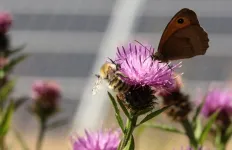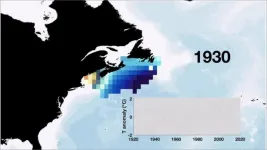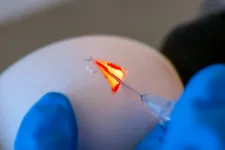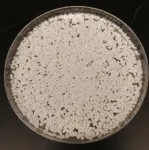INFORMATION:
Funded by NERC (ENVISION DTP), with support from Low Carbon, authors included Hollie Blaydes (Lancaster University), Dr Alona Armstrong (Lancaster University), Prof Simon Potts (University of Reading) and Prof Duncan Whyatt (Lancaster University)
Link to full study here https://www.sciencedirect.com/science/article/pii/S1364032121003531
DOI: 10.1016/j.rser.2021.111065
Ten ways to ensure bees benefit from the solar power boom
Researchers assessing the impact of solar energy development across Europe have come up with ten ways in which the expansion of solar can be shaped to ensure pollinators benefit.
2021-04-20
(Press-News.org) Researchers assessing the impact of solar energy development across Europe have come up with ten ways in which the expansion of solar can be shaped to ensure pollinators benefit.
Space-hungry solar photovoltaic (PV) is set to dominate future global electricity supply, but with careful decision making, efforts to secure clean energy need not come at the expense of biodiversity - particularly pollinators which are in sharp decline.
Bees, hoverflies, wasps, beetles, butterflies and moths play a key role in food production, with around 75% of the leading global food crops and 35% of global crop production relying on them to some extent.
Writing in the journal Renewable and Sustainable Energy Reviews, a Lancaster-led team of environmental scientists systematically reviewed the available evidence on how land management practices relating to solar parks in North West Europe could enhance pollinator biodiversity.
Along with colleagues from the University of Reading, they highlighted ten evidence-based ways to protect and even enhance pollinator biodiversity ranging from sowing wildflowers to connecting solar parks to nearby areas of semi-natural habitat.
Their findings are timely as, in a bid to tackle climate change and reduce greenhouse gas emissions, more power is being generated from renewable sources - at the beginning of 2020 a record breaking 47% of the UK's electricity came from renewables, including wind, solar, hydro, wave and biomass.
Solar parks can produce large amounts of power, with the UK's largest solar park set to power 91,000 homes once complete. But, solar parks also take up land, with potential impacts on the environment. In the UK approximately half of PV has been installed as ground-mounted solar parks, ranging in size from 1-40 hectares.
Shading caused by rows of solar panels affects air temperature, rainfall and evaporation which has a knock on effect on soil, vegetation and biodiversity.
However, in the UK solar parks are often built in intensively managed agricultural landscapes and thus are poor for biodiversity. In this scenario, solar parks may in fact provide opportunities to establish hotspots of pollinator biodiversity which in turn can help pollinate local crops such as oilseed, strawberries and apples.
Lancaster University's Hollie Blaydes said: "Many pollinators are in decline both in the UK and in other parts of the world. Actions to conserve pollinators include reversing agricultural intensification and maintaining natural habitat, both of which can be achieved within solar parks. Often built amongst agricultural land, solar parks offer a unique opportunity to provide pollinator resources where they are most needed."
Prof Simon Potts, University of Reading, said: "As well as promoting biodiversity, pollinator-friendly solar parks also have the potential to provide tangible economic benefits to farmers through enhancing pollination services to adjacent agricultural land, boosting crop yields.
"Imagine a world where solar parks not only produced much needed low carbon electricity but were also diverse and attractive wildflower meadows buzzing with insect life."
Dr Alona Armstrong, Lancaster University Environment Centre said: "Land use change for solar parks could cause further degradation of our environment but, if done well, offers much potential to improve our environment. If we transition well, we could use energy system decarbonisation to also address the ecological crisis. Given where we are, can we afford not to?"
ELSE PRESS RELEASES FROM THIS DATE:
URI oceanographers reveal links between migrating Gulf Stream and warming ocean waters
2021-04-20
KINGSTON, R.I., -- April 20, 2021 -- The Northwest Atlantic Shelf is one of the fastest-changing regions in the global ocean, and is currently experiencing marine heat waves, altered fisheries and a surge in sea level rise along the North American east coast. A END ...
How the language you speak aligns to your genetic origins and may impact research on your health
2021-04-20
Almost 80% of South Africans speak one of the SEB family languages as their first language. Their origins can be traced to farmers of West-Central Africa whose descendants over the past two millennia spread south of the equator and finally into Southern Africa.
Since then, varying degrees of sedentism [the practice of living in one place for a long time], population movements and interaction with Khoe and San communities, as well as people speaking other SEB languages, ultimately generated what are today distinct Southern African languages such as isiZulu, isiXhosa and Sesotho.
Despite these linguistic differences, ...
Biologists discover a new type of placental structure in animals
2021-04-20
The Cyclostomata is an ancient group of aquatic colonial suspension-feeders from the phylum Bryozoa. The fact that they have unique placentae has been discovered by researchers at St Petersburg University and the University of Vienna. The coenocytes, i.e. large multinucleate cell structures, originate via nuclear multiplication and cytoplasmic growth among the cells surrounding the early embryo. Interestingly, the coenocytes are commonly found among fungi and plants, yet are quite rare in animals. It is the first time coenocytes have been discovered in placenta.
Biologists are well aware that the cells of the living organisms are incredibly different in the way that they behave. They may happen to form a ...
New study reveal targeted therapy working in early breast cancer
2021-04-20
Targeted therapy in early stages of breast cancer can pave the way for a notable higher success rate, shows a study from the University of Bergen, Norway (UiB).
PARP (Poly (ADP-ribose) polymerase) inhibitors represent an established targeted therapy for multiple cancer types, including cancers of the prostate, ovary and rare cases of breast cancer.
PARP inhibitors take advantage of defects in a central mechanism of DNA damage repair, observed in these cancers. While such compounds have been successfully applied in ovarian and prostate cancers, to this end only a small minority of patients with breast ...
Chickens and pigs with integrated genetic scissors
2021-04-20
Researchers at the TUM have demonstrated a way to efficiently study molecular mechanisms of disease resistance or biomedical issues in farm animals. Researchers are now able to introduce specific gene mutations into a desired organ or even correct existing genes without creating new animal models for each target gene. This reduces the number of animals required for research..
CRISPR/Cas9 enables desired gene manipulations
CRISPR/Cas9 is a tool to rewrite DNA information. Genes can be inactivated or specifically modified using this method. The CRISPR/Cas9 system consists of two components.
The gRNA (guide RNA) is a short sequence that binds specifically to the ...
A study finds gender bias in music recommendation algorithms
2021-04-20
Although the problem of gender discrimination is already found in the music industry, music recommendation algorithms would be increasing the gender gap. Andrés Ferraro and Xavier Serra, researchers of the Music Technology research group (MTG) of the UPF Department of Information and Communication Technologies (DTIC), with Christine Bauer, of the University of Utrecht (Netherlands), have recently published a paper on gender balance in music recommendation systems in which they ask themselves how the system should work to avoid gender bias.
At the outset, the authors identified that gender justice was one of the artists' main concerns
Initially, the work by Ferraro, Serra and Bauer ...
New findings suggest organ tissues become increasingly immune throughout life
2021-04-20
MINNEAPOLIS/ST.PAUL (04/20/2021) -- University of Minnesota Medical School researchers have offered new ways to think about the immune system thanks to a recent study published in END ...
Preventing evictions remains critical to controlling COVID-19, study finds
2021-04-20
PHILADELPHIA - Renter protection policies that have curbed mass evictions during the COVID-19 pandemic have played a key role in preventing the spread of SARS-CoV-2 in U.S. cities, according to a new study published in Nature Communications.
Using an epidemiological model to predict how evictions and eviction moratoria would impact the epidemic, the researchers found, for instance, that in a city of 1 million in which 1 percent of households experience eviction monthly, this could lead to up to 49,000 excess COVID-19 infections. In Philadelphia alone, a fivefold increase in ...
Overgrowth of gut yeast in newborns may increase asthma risk
2021-04-20
An overgrowth of yeast in the gut within the first few months of life may cause changes to the immune system that increase the risk of asthma later on, shows a study published today in eLife.
Asthma is a common and sometimes difficult-to-manage, life-long lung condition that affects one in 10 children in developed countries. The findings explain a possible cause of asthma and may help scientists develop new strategies to prevent or treat the condition.
The period just after birth is a critical window for the development of a healthy immune system and gut microbiome. ...
Specialized technique captures unique protein structures in neuropathy disorders
2021-04-20
Charcot Marie Tooth and Dejerine-Sottas syndrome are groups of diseases that involve the breakdown of the myelin sheath covering nerve axons.
As this myelin sheath breaks down, people who have these disorders suffer nerve damage in the arms and legs--those with Dejerine-Sottas disease may never walk or may lose the ability to walk by the time they are teenagers.
Researchers have known that a protein called PMP22, which is important for nerve myelin, is likely involved in the disease. But because the protein is so small and part of the cell membrane, ...
LAST 30 PRESS RELEASES:
Injectable breast ‘implant’ offers alternative to traditional surgeries
Neuroscientists devise formulas to measure multilingualism
New prostate cancer trial seeks to reduce toxicity without sacrificing efficacy
Geometry shapes life
A CRISPR screen reveals many previously unrecognized genes required for brain development and a new neurodevelopmental disorder
Hot flush treatment has anti-breast cancer activity, study finds
Securing AI systems against growing cybersecurity threats
Longest observation of an active solar region
Why nail-biting, procrastination and other self-sabotaging behaviors are rooted in survival instincts
Regional variations in mechanical properties of porcine leptomeninges
Artificial empathy in therapy and healthcare: advancements in interpersonal interaction technologies
Why some brains switch gears more efficiently than others
UVA’s Jundong Li wins ICDM’S 2025 Tao Li Award for data mining, machine learning
UVA’s low-power, high-performance computer power player Mircea Stan earns National Academy of Inventors fellowship
Not playing by the rules: USU researcher explores filamentous algae dynamics in rivers
Do our body clocks influence our risk of dementia?
Anthropologists offer new evidence of bipedalism in long-debated fossil discovery
Safer receipt paper from wood
Dosage-sensitive genes suggest no whole-genome duplications in ancestral angiosperm
First ancient human herpesvirus genomes document their deep history with humans
Why Some Bacteria Survive Antibiotics and How to Stop Them - New study reveals that bacteria can survive antibiotic treatment through two fundamentally different “shutdown modes”
UCLA study links scar healing to dangerous placenta condition
CHANGE-seq-BE finds off-target changes in the genome from base editors
The Journal of Nuclear Medicine Ahead-of-Print Tip Sheet: January 2, 2026
Delayed or absent first dose of measles, mumps, and rubella vaccination
Trends in US preterm birth rates by household income and race and ethnicity
Study identifies potential biomarker linked to progression and brain inflammation in multiple sclerosis
Many mothers in Norway do not show up for postnatal check-ups
Researchers want to find out why quick clay is so unstable
Superradiant spins show teamwork at the quantum scale
[Press-News.org] Ten ways to ensure bees benefit from the solar power boomResearchers assessing the impact of solar energy development across Europe have come up with ten ways in which the expansion of solar can be shaped to ensure pollinators benefit.





